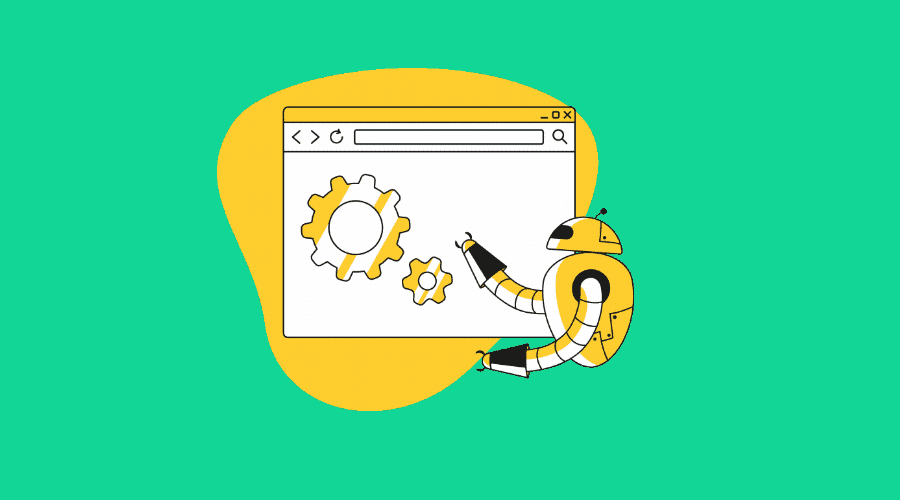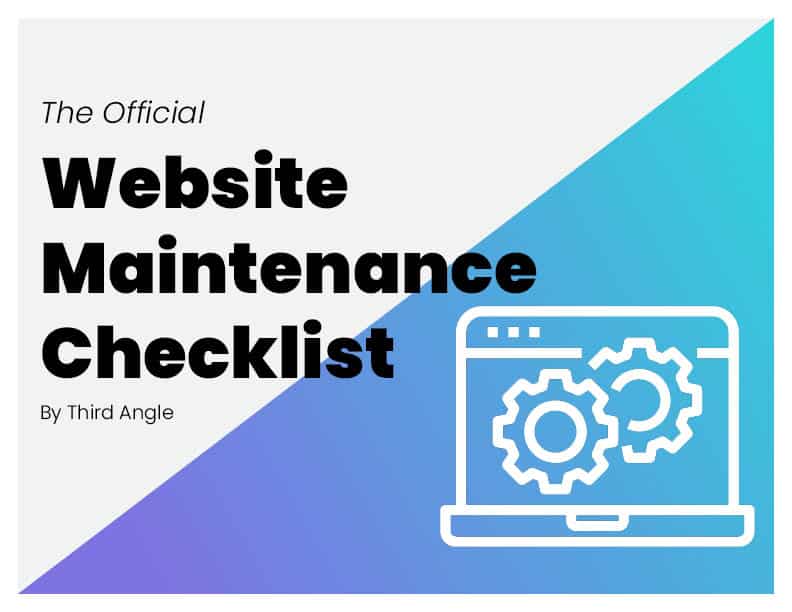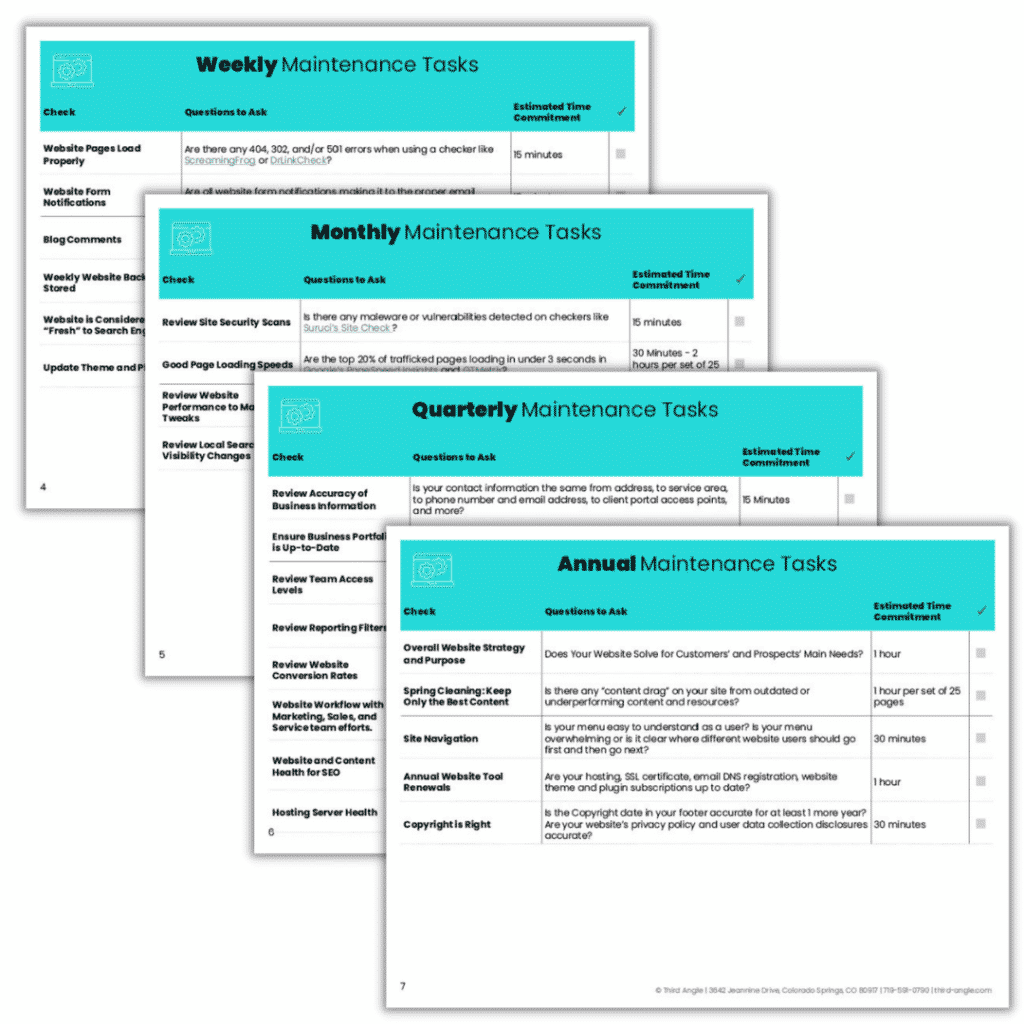
How to Get the Most Out of Your Website Maintenance Plan
Posted Oct 11, 2022 | Updated 3 years ago
Building a company website takes a lot of valuable resources. Yet, once you finish creating your website, you must ensure everything is running smoothly. That’s why you need a website maintenance plan to keep things going in your business.
Without a plan for ongoing upkeep of your website, you take big risks. Over time, you can undo tons of work, and create loads of new work to be done, without investing in website maintenance. It doesn’t require too much, but, just like remembering to change the oil in your car, a little goes a long way to preventing a major issue.
To avoid a headache for your future self, take advantage of your WordPress website maintenance plan today.
What Is WordPress Website Maintenance?
Website maintenance is how it sounds exactly. It’s a continual process to keep your website functional, thwart any security gaps, and keep your content fresh in the eyes of search engines and visitors alike.
Depending on the size of your WordPress website, and the types and volume of plugins and custom tools added to the base, maintenance can involve a short or long list of tasks. In any case, we recommend categorizing these recurring tasks into a few assignments that you can perform weekly and monthly.
The Importance of Ongoing Website Maintenance
Technology is continuously changing to improve our daily lives. And on the flip side, online no-gooders are continually creating new ways of breaching websites and creating messes for others to clean up; sometimes just for fun, other times for more lucrative reasons.
Here are some of the top reasons why your brand needs to have a website maintenance plan.
1. Keeps Your Website Secure
Security is the most critical factor for keeping your website up-to-date. Every website is at risk for cyber attacks, no matter how small or large your company may be.
According to IBM’s 2022 Data Breach Report, the average cost of a data breach is $4.35 million, which increased by 2.6% from last year. This is a tremendous amount of money that can be costly for companies to recover.
While many small businesses don’t feel vulnerable to cyber attacks, in fact, 43% of breaches targeted small companies. You definitely don’t want to be part of that statistic.
A good website maintenance plan ensures you keep security threats at bay by taking the proper precautions. That starts with having a high quality security plugin (like iThemes Security, which is our go-to for most website builds) and continues with updating plugins and themes to prevent backdoors for no-do-gooder schemes to infiltrate.
There’s more to website maintenance than simple website security, though, even though that issue takes top of the list.
2. Provides Good User Experience
Keeping a clean, smooth-running and fast loading site will positively impact the user experience. When your website looks out-of-date or loads slowly, these factors contribute to a poor user experience and decreases the trust visitors have in your credibility as an organization.
Users are likely to move along to a competitor’s website when they are met with an unappealing website and slow loading content, driving away your potential customers.
A good website maintenance plan will ensure users have a positive experience by eliminating common frustrations such as slow page loading speeds, non-mobile responsive layouts, broken links, non-loading media, and so forth.
3. Improves Search Engine Ranking Potential
Website maintenance is vital to ranking on search engines. When your website is fast, secure and regularly updated with new content, search engines, like Google, analyze your website more frequently, assess greater relevance to what you are sharing, and are more likely to rank your website higher in the search results.
SEO (search engine optimization) is crucial for driving traffic to your website, so it’s important not to ignore regular maintenance.
What Are the Elements of a Website Maintenance Plan?
If you’re wondering what a website maintenance plan looks like, the most important elements include:
- Regular security updates: Prevent the risk of cyber attacks by changing user passwords, using two-factor authentication, getting and maintaining an SSL certificate, and having a straightforward way of storing website backups.
- Installation updates: Ensure optimal website security and functionality by installing updates from security software, plugins and hosting providers.
- Continuously Improve Content: Content must regularly be up-to-date to boost your SEO and relevance. Maintain fresh content by publishing articles, optimizing images, updating outdated information and implementing changes in SEO best practices across existing pages.
Keep making improvements to support changes and growth on your website. You can expand your reach and gather leads by streamlining responses to inquiries, optimizing your online store and launching new marketing campaigns.
- Site Monitoring: Analyze your website to ensure it’s performing optimally. Check for speed issues, broken links, 404 errors, form submission and notification settings, server errors and browser compatibility issues.
- Analytics: Analytics helps you monitor traffic data. Consider using A/B testing to boost performance and review key performance indicators for changes.
- Prevent website downtime: Setup auto-renewal for your hosting and domain registration services. In a worst case scenario, ensure your team has an action plan in place if your website goes down or there is a server glitch.
Create a Website Maintenance Checklist
Website maintenance involves a checklist to ensure your keeping up with all the components listed above. To make sure you’re maintaining your website regularly, here are the activities to complete.
Weekly Tasks
Weekly tasks include:
- 404 error monitoring
- Core plugin and software updates
- Publish blog posts
- Page load error fixes
- Broken link checks
- Website backup storage

Monthly Tasks
Monthly tasks involve:
- Website speed checks
- Website security scans
- Analytics and site statistics checks
- Content updates
Quarterly Tasks
Quarterly tasks should include:
- Calls to action testing and improving
- Image updates
- Workflow monitoring
- Website backup health check
- Website design improvements
Annual Tasks
Website tasks for annual maintenance include:
- Reference updates to the current year
- Content accuracy and relevancy checks
- Domain name renewal
- Web design updates
- Top-performing content updates
- Mobile site optimization
When To Invest in Website Maintenance Services
Website maintenance can be a time-consuming process. Most business owners don’t have time to implement it correctly or have the expertise to do it. Even if you have the right plugins to run website maintenance checks, it can still be a full-time job.
That’s why you might consider investing in website maintenance services. When you enroll in a website maintenance plan, you give yourself peace of mind for a modest fee.
Some of the benefits of professional website support include:
- Easy budgeting with a monthly fee.
- A qualified team that knows how to handle everything, from page speed to downtime.
- Always treated as a high priority.
- Receive results-driven work.
Overall, hiring website maintenance services can keep you from making mistakes — and ensures you protect and improve your website performance.
Implement Website Maintenance In Your Business
Website maintenance may seem daunting, but it’s necessary to ensure everything is running smoothly. As you craft your website maintenance plan, keep these things in mind:
- Regular maintenance is an investment in your business.
- A simple checklist can ensure your site is performing optimally and gaining results.
- The right website maintenance services team offers maximum support and saves time while focusing on your business.
With that in mind, you can use these tips to ensure you’re making the most of your website maintenance plan. And, if you do not have a website maintenance plan in place, let’s make that right so that your online presence is protected from the dangers of the interwebs.


